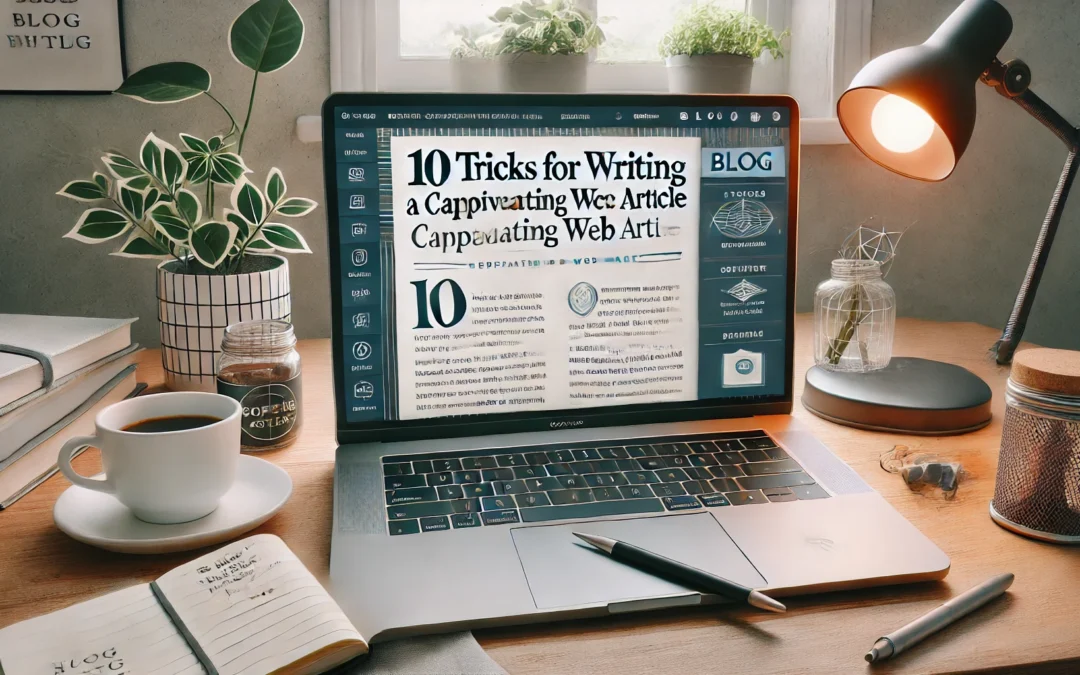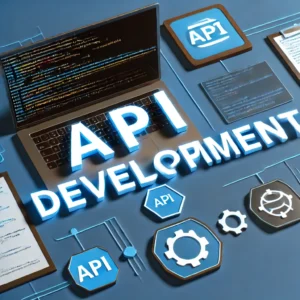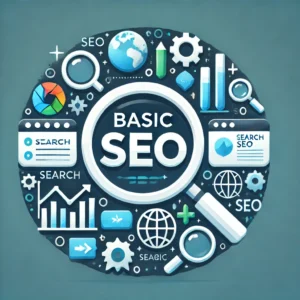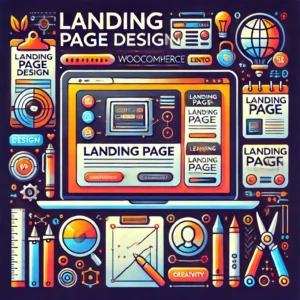10 Tricks for Writing a Captivating Web Article. Writing a captivating web article is more than just putting words on a page—it’s about connecting with readers, guiding them through your content, and keeping them engaged from start to finish. In a world where attention spans are shrinking and competition for views is fierce, creating an article that stands out is essential. Whether you’re a seasoned writer or a beginner, mastering a few simple tricks can make all the difference in how your content is received.
In this article, we’ll dive into 10 proven techniques to craft web articles that capture readers’ interest, improve SEO, and encourage interaction. From writing irresistible introductions to strategically incorporating visuals and calls to action, these tips will help you transform your writing and leave a lasting impact on your audience. Let’s get started!
1. Start with a Catchy Hook
Your first sentence is your only chance to make a lasting first impression. The hook is essential because it determines if readers will stay engaged or bounce to another page. To create a strong hook:
- Ask a Question: For instance, “Are you tired of writing articles that don’t get any traffic?” This makes readers curious and prompts them to think.
- Use a Surprising Fact or Statistic: Facts like, “90% of articles are never read to completion,” can spark interest and make readers want to keep reading to learn more.
- Share a Relatable Story: Stories make your article personable and relatable, drawing readers into the narrative. For example, “When I started my blog, I struggled to get anyone to read my posts…”
A well-crafted hook sets the stage for the rest of the article, compelling readers to continue.
2. Structure with Headings and Subheadings
Good structure improves both readability and SEO. Headings and subheadings organize content, making it easier for readers and search engines to understand the main points.
- Use H2 and H3 Tags for Clarity: H2 tags should highlight the main sections, and H3 tags can be used for subsections. Clear headings allow readers to scan and find the content most relevant to them.
- Incorporate Keywords in Headings: This helps search engines identify the main themes of each section and improves the chances of your article ranking higher.
- Avoid Long Titles: Keep headings short and relevant. Long, confusing titles can overwhelm readers and reduce clarity.
Organizing content with headings and subheadings is essential for retaining reader attention and optimizing the article for search engines.
3. Use Bullet Points and Lists
Lists and bullet points improve readability by breaking down complex information into digestible bits. Readers are more likely to engage with articles that are easy to scan.
- Highlight Key Information: Use lists to emphasize key points, such as step-by-step instructions, benefits, or statistics.
- Create Visual Hierarchy: Lists give the eye something to “land on,” creating visual contrast within the content and making it feel less dense.
- Increase Reader Engagement: Lists and bullet points are often where readers pause to absorb information, so placing important facts here can increase retention.
Lists are ideal for keeping readers engaged and improving the article’s flow.
4. Incorporate Visuals
Visuals make content more engaging and help convey complex ideas quickly. Articles with visuals tend to have higher engagement rates and retain readers longer.
- Use Relevant Images: Ensure images enhance the content. For instance, an infographic explaining data or an example of a design concept can help readers understand complex ideas.
- Optimize Image Sizes: Large images can slow down your website, affecting user experience and SEO. Compress images before uploading to maintain load speed.
- Add Alt Text for Accessibility and SEO: Alt text not only improves accessibility for visually impaired readers but also helps search engines understand the image content, improving your article’s ranking potential.
Visuals are a valuable addition to web articles, making content more appealing and digestible.
5. Write in Short Paragraphs
Short paragraphs make content more readable, especially on mobile devices. Large blocks of text can appear overwhelming and deter readers from continuing.
- Limit Paragraphs to 2-3 Sentences: Break up long paragraphs to create breathing room within your content.
- Use Line Breaks Strategically: Separate ideas with line breaks, and don’t be afraid to leave white space for a cleaner look.
- Start Each Paragraph with Key Points: Readers often skim, so starting with the main point makes it easier for them to understand the gist quickly.
Short paragraphs keep readers engaged and prevent them from feeling overwhelmed.
6. Make it Interactive
Interactive elements add depth to an article and keep readers engaged longer. They also provide a more personalized experience, encouraging readers to explore your content.
- Add Polls or Quizzes: These are excellent for engaging readers and encouraging them to think about your content.
- Embed Interactive Content: Use tools like embedded Tweets, Instagram posts, or videos to add variety.
- Allow for Reader Feedback: Let readers comment or react to your content. This not only builds engagement but also gives insight into your audience’s thoughts.
Interactive elements enhance user engagement, making the article memorable and shareable.
7. Include a Strong Call to Action (CTA)
A well-placed CTA prompts readers to take action, whether it’s to subscribe to a newsletter, comment, or share the article. A strong CTA can make a significant difference in engagement and audience growth.
- Make CTAs Clear and Direct: For instance, “Subscribe now for more insights!” is straightforward and tells readers exactly what to do.
- Place CTAs Naturally: Don’t overwhelm readers with constant CTAs. Place them at the end of the article or at key points where readers might want more.
- Use Action-Oriented Language: Words like “discover,” “join,” and “start” encourage readers to act.
CTAs guide readers to engage more deeply with your content, turning casual readers into loyal followers.
8. Use Keywords Naturally
Keywords are essential for SEO, but overusing them can harm readability and rank. Focus on naturally incorporating keywords to keep the article flow smooth and authentic.
- Place Keywords in Key Areas: Include keywords in headings, intro, conclusion, and body text where they naturally fit.
- Use Variations of Your Keywords: Synonyms and related keywords provide depth and make the content feel natural. For instance, use “website” alongside “site” and “web page.”
- Avoid Keyword Stuffing: Search engines penalize keyword stuffing. Prioritize readability, using keywords as a guide rather than a requirement.
Using keywords strategically improves SEO while maintaining the article’s natural tone and readability.
9. Link to Reliable Sources
Linking to high-quality, reputable sources builds credibility and adds value for readers. It also signals to search engines that your content is trustworthy.
- Link to Authoritative Websites: Reference industry leaders or respected organizations, as this enhances your article’s reliability.
- Use Sources that Add Value: Ensure every link is relevant to the topic and provides additional information or context.
- Avoid Excessive Linking: Too many links can distract readers. Use links sparingly and strategically.
High-quality links strengthen your article’s credibility and boost SEO, making it a trusted resource.
10. Optimize for SEO with Meta Descriptions
Meta descriptions are summaries that show up in search engine results, helping readers decide whether to click. A well-crafted meta description increases the click-through rate.
- Keep Meta Descriptions Between 150-160 Characters: Concise descriptions give readers a clear idea of what to expect.
- Include Keywords Naturally: Add your main keyword to help search engines connect your content to relevant searches.
- Highlight Benefits: Describe why readers should click. For instance, “Learn 10 tricks to make your web articles engaging and SEO-friendly.”
Optimizing meta descriptions is an essential step for attracting readers through search engines.
Conclusion
Writing a captivating web article is an art that combines SEO knowledge, reader psychology, and clear communication. By following these 10 tricks, you’ll create content that ranks well on search engines, engages readers, and builds a loyal audience.
Happy writing!






